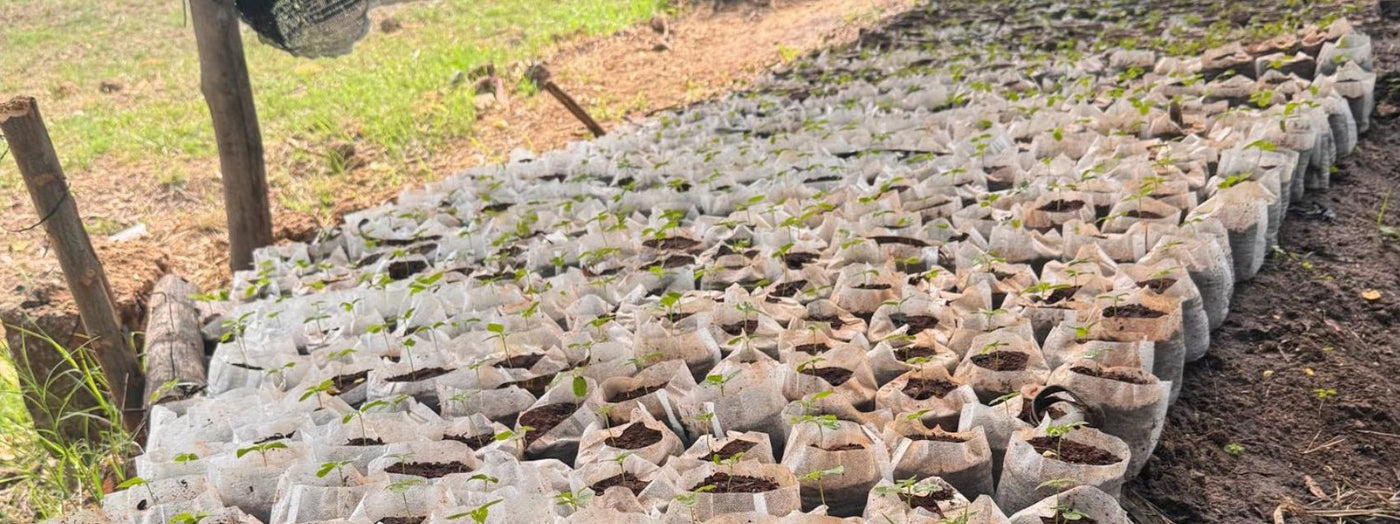A Journey into the Usambara Mountains

It's Monday morning, March 4th, 2024. My bags are already packed as I pull out a checklist to ensure I've packed rain boots, a raincoat, camera, computer, and batteries. The 360 km journey begins by boarding a bus at Morogoro bus terminal bound for Lushoto, offering seven hours of enjoying the beautiful scenery of woodlands, grasslands, forests, and agricultural landscapes on the sides of the road. The scenery becomes even more breathtaking in the last hour while ascending from Mombo small town to Lushoto, offering the best view of mountains, water flowing downstream, chirping birds, and agroforestry fields. Upon arrival, I check into a hotel and immediately embark on a nature walk that concludes with dinner at a local restaurant.
The next morning, the visit begins with the aim of meeting project partners to discuss the progress of our tree planting initiative, visiting planted sites, and observing nursery operations. I am excited to share the insights of my visit with you.
Nursery
During this time of the year, nurseries are bustling with activity in preparation for seedlings to be planted from the end of March through May, during the long rainy season known as Masika. Nursery workers are diligently sorting healthy seedlings, sowing new seedbeds, preparing potting mixtures, and organizing new tubes. A highlight of the visit was on International Women's Day, where a significant proportion of women working in our tree planting projects were working in nurseries. The day was filled with workers singing popular local songs praising women in the workforce. Happy workers are motivated to do exceptional work, and we witnessed healthy seedlings thriving in the nursery. The area and infrastructure around the nursery are kept neat to reduce the chances of infection and fungi buildup.
Planting
During the visit, our partners were preparing to plant 175,000 trees in six new sites, totaling about 160 hectares. The trees to be planted include native trees for reforestation areas and agroforestry trees to be distributed to the community. Planting season begins in mid-March and continues through May. Teams will start by strip clearing and pitting, followed by the distribution of seedlings with attention to species mix.
Old Sites
We visited a total of nine sites planted since 2021, all of which are thriving. The oldest site's trees have reached a height of two meters, marking an empowering moment witnessing the progressive growth from under the knee height to over your head. Weeding and replacing dead trees are due this planting season, and preparations are already underway at sites planted last season.
Impacts
Significant improvements are visible in all planting sites. Native trees and non-tree vegetation are flourishing, rejuvenating the biological diversity of the forest. Efforts to restore forest biodiversity have led to the total removal of sources of disturbances, mainly human activities such as grazing, agriculture, and logging. With community education, clear demarcation, and promotion of alternative livelihood activities, forest disturbances have reduced to near zero. In our nursery, we are currently testing non-woven biodegradable tubes to potentially replace polythene tubes, a step forward in combating plastic pollution. The community benefits greatly from our tree planting initiative, with over 100 permanent employment opportunities provided in our nursery workforce, and over 300 in planting and tending operations. We also support community initiatives such as building schools, water and electric supply, and education, with 5% of our tree planting funds allocated to these endeavors. Additionally, we support secondary students by paying school fees, providing uniforms, books, and stationery, along with a mentorship program during long holidays. With that, my visit comes to an end as I bid farewell to my hosts and board a bus back to Morogoro. On the way home, I reflect on the significant progress made in the mountains, the work that lies ahead, and strategies for improvement. I make a few stops to buy fresh fruits from roadside vendors to bring home as gifts from Usambara, along with beautiful stories.
From Trees with Love
Omega Emmanuel Kaaya
write a comment
Comments are approved before posting.








